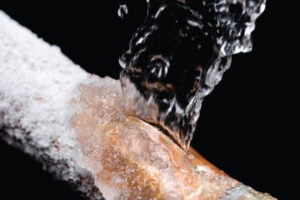Fire produces 2 types of smoke damage, the invisible odor, and the visible soot. As every fire is distinctive, it is impossible to offer a single set of rules for eliminating odor and soot. For instance, smoke odor from the rood could react unusually to specific cleaning products as compared to the smoke odor from the plastics. As it is generally tough for inexperienced house owners to eliminate smoke odors and soot on their own, it is suggested to get the help of professional advice or assistance.
- First of all, it would be sensible of you to reach out to the proper individuals for assistance.
- In case you have insurance, reach out to the insurance agent for advice and suggestions.
- Or if you rent the dwelling, make sure to notify the owner as soon as possible and then both of you can inspect the damage.
- While cleaning up soot/smoke, it is vital to wear respirator, like an N-100 or N-95. Utilizing gloves as well as another protective wearable will also secure against the soot exposure.
- Ventilation is the most important part of letting the contaminants in the air outside.
- Dry wet carpets, draperies, clothing, and upholstered furniture as soon as possible for preventing mildew and mold.
Hang the clothing on the clothesline outside, use dehumidifiers and fans to dry draperies and carpets, as well as prop up the wet upholstery cushions to even dry. Do not try to clean or even touch upholstered furniture, carpets, draperies or any other household textile articles as those cleaning steps will smear soot into the fabric and will make the cleaning tougher.
- Before draperies, carpets, clothing, and upholstered furniture can be cleaned or deodorized, you should remove the soot.
- As soot is oily, it can easily stain the items and that is why curtains, upholstered furniture, as well as other textile objects must not be touched after a fire.
- In case you hire an expert fire restorer, he will eliminate soot with the heavy-duty vacuum.
- Always remember that the cleaning of soiled clothing takes place through several laundry methods, as all the fire damaged clothing cannot be cleaned equally and with the same method.
- Categorize the fire damaged clothing just like you would sort the soiled clothing through the suggested care method (look to the permanent care label), degree of soil, and color.
- Sort the washable clothing by soil (heavy/moderate/light) and color (dark/medium/light).
When a home’s contents are destroyed by soot/smoke, reducing the fire damage, restoring contents to the pre-loss condition, and cleaning is the job for restoration specialists. To efficiently remove smoke and soot damage from the household textile articles like draperies, upholstered furniture, and carpet, it is inevitable to utilize the proper chemicals, the correct judgment, and equipment which come from one’s experience. Specialist fire restorers, appropriately trained, contain the materials and knowledge to refurbish the household textiles after the fire.





